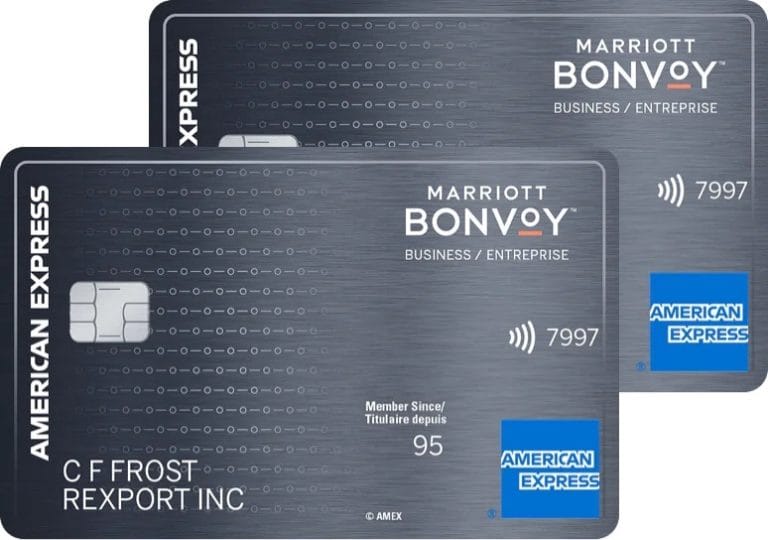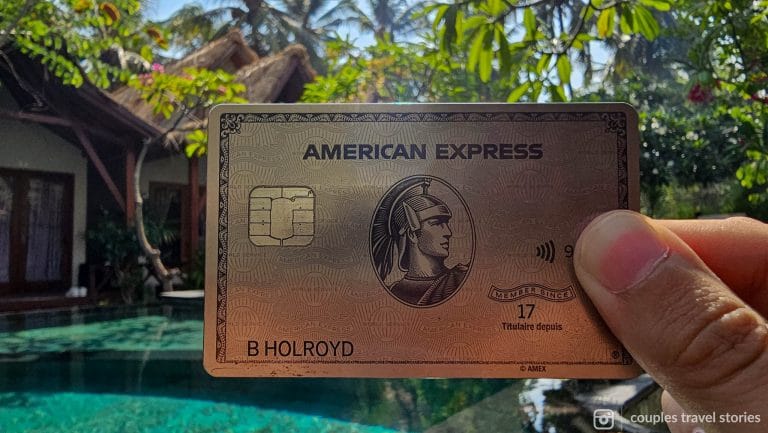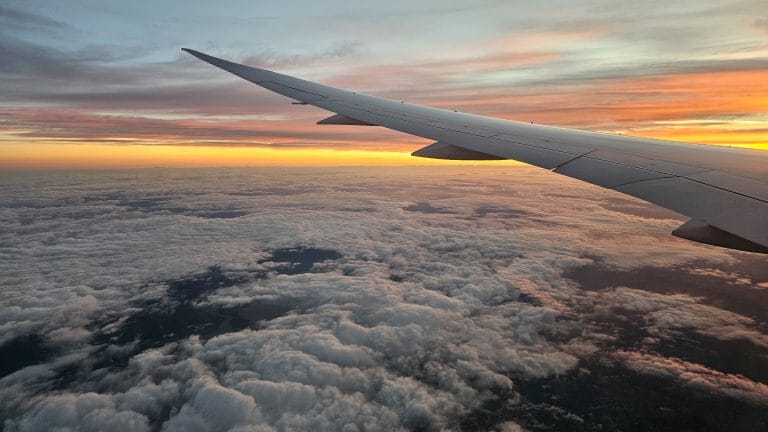Digital Nomad Checklist: Stepping Into The Lifestyle

Are you considering becoming a digital nomad, but are overwhelmed with the numerous things to do before making the leap? Our digital nomad checklist will help simplify the process and ensure you feel prepared to take your first steps into this exciting journey.
- Secure an online job
- Choose a new (temporary) home
- Understand your visa requirements
- Plan a cost-effective visa run
- Understand income tax requirements
- Set up effective international banking
- Set up mail forwarding
- Ensure your IT setup is ready
- Review your packing/purchase check-list
We’ll discuss each topic and more in detail below.
Table of Contents
Securing Work
Becoming a digital nomad is a lot easier and safer if you can secure employment while still in your home country. Finding remote work can take time. While this digital nomad checklist doesn’t dive deep into career suggestions, here’s a few ideas to get you started:
Top Careers for Digital Nomads
- Programming
- Graphic Design
- Social Media Manager
- E-commerce
- SEO / Web Developer
- Accounting/Finance
It’s worth noting that each employer will have different work location policies. Some employers allow international employees, while this may be strictly disallowed at others. It’s important to have a plan for either scenario, which we will discuss shortly.
Top Freelance Job Sites for Digital Nomads
Top Remote Job Boards
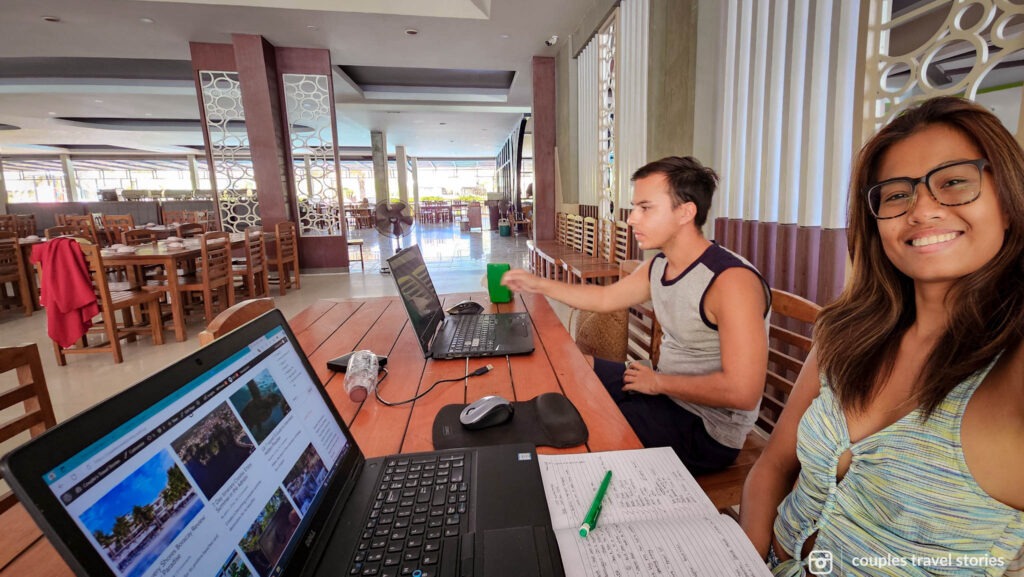
Location Research
While some digital nomads like to wander aimlessly, if you’re researching checklists online, it’s safe to assume you prefer to have a plan. For those with stable work commitments, knowing where you’ll be living in the short-term future is a necessity.
Digital nomads may be seeking different things when traveling including safety, cost of living, attractions, nightlife, food culture, weather, strong WiFi, and more.
Best Countries for Digital Nomads
While of course subjective, here are some top countries for digital nomads in 2025:
- North America: Costa Rica, Mexico, Dominican Republic
- South America: Argentina, Colombia
- Europe: Estonia, Romania, Georgia, Portugal, Spain, Greece
- Africa: Cabo Verde, Mauritius, Rwanda, Zanzibar
- Asia: Thailand, Bali, Malaysia, Vietnam
Check out our complete list of top digital nomad countries. If looking to spend as little as possible, see this list of top 20 affordable countries for digital nomads.
Top 14 affordable cities in Southeast Asia for Digital Nomads (including cost of living)

Digital Nomad Travel Visas
Your visa requirements are dependent on the country you’re traveling to, and what passport you’re traveling with. You may be able to travel visa-free for a certain period, or you may be required to apply for a visa in person or online.
Our favorite website to search for visa requirements is Sherpa.
Visa Types
Most digital nomads travel on a typical tourist visa. Tourism visas typically disallow visitors from working from within their country, either for local employers or abroad. That said, the local country has no way of knowing that you have an online job, and most nomads simply don’t advertise their job to public officials. Although easier to get, tourism visas are shorter in length.
Every year, more and more countries are offering digital nomad visas. These visas allow for longer-term stays. An important factor to note is that some countries will expect you to pay income tax if you’re earning income from within their country. Here is a listing of all countries offering DN visas.

Visa Run
If you’re visiting a country which allows you to stay visa-free for a period of 30 or 90-days but you want to stay longer, common practice is performing a visa run. This involves temporarily leaving the country you reside in to reset your 30 or 90-day clock. Ideally this would be done via a neighboring country which you can also enter visa-free.
Crossing via land or sea is typically cheaper than flying. Often you can re-enter your country of temporary residence immediately, even same-day as your departure. Just aim to have your passport stamped as proof of your legal re-entry.
Visa-Free Countries
Potential visa-free countries depends on your citizenship. Common visa-free countries include:
- North America: Costa Rica, Mexico, Dominican Republic
- South America: Argentina, Colombia
- Europe: Estonia, Romania, Georgia, Portugal, Spain, Greece
- Africa: Cabo Verde, Mauritius, Rwanda
- Asia: Thailand, Malaysia, Philippines, Japan
The above list is accurate for Canadian passports as of 2026. This list is nearly identical to our best countries for digital nomads checklist.

Taxes for Digital Nomads
Understanding the tax implications of your move is crucial to avoiding some expensive mistakes. If you plan to work while abroad, you’ll need to know which country you have to pay income tax to. Further, simply leaving your home country can have tax implications.
Income Tax
Before moving to a new country, understand if you need to be paying income taxes to your country of citizenship, or the country you plan to move to, or both. Avoid unexpected tax bills of thousands of dollars, and the risk of jail time for tax avoidance.
If you plan to leave your home country and cease to be a tax-resident, ensure a CPA assists you in filing a tax return with your departure date clearly reported.
Departing Canada
A Canadian citizen who resides in Canada for 183 days or more of the tax year is considered a resident, and must pay income tax on all worldwide income. Due to the benefits of remaining a tax resident of Canada, many nomads starting out with the lifestyle will remain in Canada for at least half the year.
A Canadian citizen who resides in Canada for less than 183 days may considered a non-resident, if you also sever residential ties with Canada. Non-residents still need to pay income taxes on Canadian employment, or income earned from a Canadian business. Becoming a non-resident will trigger a departure tax, and the citizen will forfeit several benefits.
This means that you if leave the country, but retain dependents, home, or other property in Canada, will may be designated as a factual resident, who must pay Canadian taxes on worldwide income.
Departing USA
A US citizen/PR who meets the Substantial Presence Test is considered a tax resident of the USA, and must pay income tax on all worldwide income.
A US citizen/PR who fails the Substantial Presence Test is considered a nonresident alien, and must pay income tax on US employment, or income earned from a US business.
Income Tax of new country of residence
Every country has its own laws to determine tax residency. As a rule of thumb, expect there to be no tax obligations if you reside for less than 6 months. If staying for more than 6 months of a calendar year, do some research to determine if you’re a temporary tax resident of that country.
Traveling on a digital nomad visa or a permanent resident visa often has income requirements, meaning your host country will be aware of the income you’re earning from within their country. All DN visas are different; some expect full income tax payments, some offer 6-months tax free, and some omit you from taxes for the full visa duration. A great resource can be found here.
Departure Tax
Departure tax is triggered when you cease to be a tax resident in your former home country.
Canada
Departure tax is triggered when a Canadian citizen severs residential ties with Canada. Departure tax is the calculation of capital gains on certain Canadian assets, such as home or investments.
USA
Departure tax is triggered when a US citizen or long-term green-card holder relinquishes their status.
The key impact is that you’re treated as if you sold most of your assets, including your home or tax-deferred investment account. You’d be subject to capital gains tax if your gains exceed US$866,000 (2024).
Note that the above comments on taxes are simplifications and are not to be considered financial advise. International tax residency is a complex and it is best to advise with a CPA.
Banking Options for Digital Nomads
Before you travel, organizing your banking as a key item on your digital nomad checklist. Otherwise you may find yourself paying high fees or unable to access your money.
Checking Account
It goes without saying that you’ll want to keep your primary bank account in the country/currency which you’ll be paid in. You’ll want an account with features that benefits travelers:
- Accessibility (able to access your account without a 2FA text message which you can’t receive!)
- No fee foreign ATM withdrawals, low currency conversion fees
- No monthly fees
If you’re US-based, Charles Schwab is known to be the best bank for travelers. Canadians may opt for a premium offering of any of the major banks, such as this account from TD which waives monthly fees with a minimum balance.
Most nomads will not set up a bank account in the local country unless planning to stay for a long duration. Credit cards and cash, along with an online foreign currency conversion service like Wise, should meet all your needs.
Travel Credit Card
A solid travel card offers so many benefits for a digital nomad. Try to get as many perks as possible from this checklist:
- No foreign exchange fees on purchases
- Strong welcome bonus to earn free flights
- Strong travel insurance (medical, trip delay, rental car)
- Free checked bags on your preferred airline
- Additional perks, such as free airport lounges, free NEXUS membership, hotel or airline elite status

This is a side note, but any time you make a purchase abroad, the terminal may ask you if you’d like to pay in your local currency or the foreign currency. If paying with a US credit card for example, always pay in USD. The foreign currency conversion fees charged by the POS machine will always be higher than the 2.5% charged by your bank.
Be sure to check out our list of the best Canadian travel credit cards to find the right one for you.
Withdrawing / Exchanging Local Cash
Although we try to use our credit cards for everything, in most countries where digital nomads are common, cash is usually king. Doing some research before your trip on the best way to exchange the local currency can save you a lot of money.
We find that so many people we speak to are excited that their bank offers them no fee for foreign ATM withdrawals, but are oblivious to the exchange rate they’re getting. Many banks offer terrible exchange rates. Losing 10% of a $1000 cash withdrawal to exchange fees is much more impactful than a $4 ATM fee. Consider several options:
- Convert at local bank branch before traveling
- This can be the most convenient and cheapest option, but not always. My Canadian banks offer exchange rates nearly 10% under official rates, which is a lot worse value than I expected.
- Foreign exchange companies
- Check the exchange rates with any major FX companies available to you in your home country. Continental Currency in Canada offered us a rate better than our own banks.
- ATM withdrawal while abroad
- You may be able to simply withdraw cash from your debit card while abroad, at the same rate as exchanging cash in advance through your local bank – confirm this possibility before you travel.
- Wise
- Digital services such as Wise often offer the best exchange rate available to digital nomads. Although often used for bank-to-bank transfer, you can also exchange currency on a physical Wise card and withdraw cash while abroad. Wise has a monthly cash withdrawal allowance which no FX fee is charged at all. Above this allowance they charge a modest 1.5%.
- Chexy
- Chexy is a useful service which allows use of your credit card for payments which typically don’t accept credit card. This includes rent, income taxes and more. Not only will you earn credit card rewards, you can avoid foreign exchange fees if withdrawing cash is your only alternative.
Our main suggestion is to know what the official exchange rate is, and then shop around.
Savings
How much should you save before becoming a digital nomad? Of course the variables are endless, but we’d recommend at least 6 months of living expenses. When traveling in third-world countries, unexpected events are to be expected, which will cost money above your anticipated budget.
Do some research on how much accommodation will cost in your countries of choice. We prefer booking and paying for all our refundable stays and flights in advance to ensure our biggest costs are taken care of.
In a checking account, keep more than enough to cover living expenses for at least 6 months. Food, transport and other costs in low cost of living countries are quite affordable of course, but it’s best to double your anticipated savings for any unexpected events.
In a high-interest savings account, keep enough to handle any emergencies. Keep enough for a lost phone or laptop, new accommodation, a new flight home, and rent in your home country.
Digital Nomad Checklist – Miscellaneous
There’s a lot of things we take for granted that become a lot more difficult for a digital nomad.
Mail Collection & Forwarding
Have a plan to collect your mail and possibly forward important documents. Because your bank may be reluctant to send replacement credit cards to a random address in Cambodia.
Mail forwarding services or virtual mailboxes such as Dakota or Virtual Mailbox work wonders.
Phone Plan
There’s several important considerations when planning your cell service, depending on your needs as well as your employer.
Many travelers will simply opt for an eSIM. These are affordable, and allow you to turn on your data as soon as you arrive at the airport, which makes calling an Uber to your hotel much easier. Our favourite is Airalo.
Making local and international calls can be important too. If your boss needs to call you and they don’t know you’re abroad, you may find yourself quickly searching for a new job. Or alternatively, if you want to change a password on a website that requires a verification text sent to your phone number, you can be locked out of your account indefinitely.
If you’re US-based, Google Voice is likely your best option for internet-based calling and texting. Log into your important accounts before your trip to change your 2FA messages to this internet-based number.
If you’re planning to get a local sim card (for local calling or ineligible for an eSIM), research phone plans/companies in advance.
IT Setup
A common challenge that digital nomads have is hiding your digital location from your employer. Many employers will disallow working from a foreign country. If caught, many digital nomads argue it’s easier to ask for forgiveness than permission.
A VPN alone is not enough to keep you safe and your location hidden. Any decent IT department will figure out you’re not working where you say you’re working.
We’re reserving judgement on the ethical dilemma of breaking company policy. To set yourself up to ensure your location remains hidden, some planning is required:
- Get a reliable VPN. Our research suggests Mullvad and Proton are the best in the market, while NordVPN is cheapest.
- Pick up a VPN router, such as this.
- Set up your VPN service on your router, disable WiFi on your laptop, and ensure you only connect to your router through an Ethernet cable.
If you work for a company with a sophisticated IT department, note that further steps may be needed to ensure that GPS networks don’t give away your location.
Cancel Existing Services
Remember to pause or cancel services while abroad to save you money. Gym memberships, phone plans and certain subscriptions should be paused. Even car insurance policies can be temporarily changed; when I inform my insurance I will not be driving, my rate drops by 90%.
Additional Checklist Items
- Renew your drivers license and passport, and get an international drivers license before you travel.
- Consider getting travel insurance for digital nomads.
- Ensure you have booked a flight out of your destination country before your visa expires. You will be asked to show this at the airport before departure.
- Back up digital copies of important documents, such as passport, licenses, birth certificate, college transcript and criminal record checks.
- Check required vaccines for travel (especially in jungle/rain-forest countries).
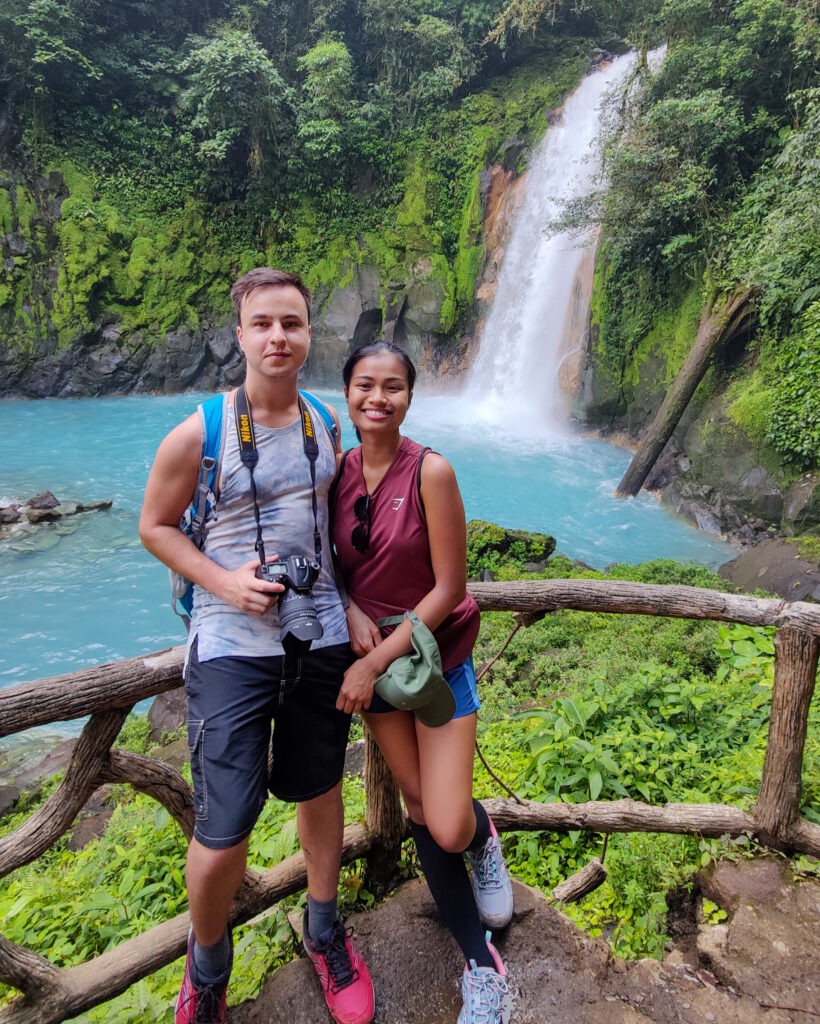
Digital Nomad Checklist – Packing List
Here are some essential items to pick up for your travels:
- A portable monitor to improve work efficiency
- A high quality mouse and keyboard
- USB hub, USB-C 3.1 cables, external storage, travel adapter
- A VPN WiFi router and FIDO2 security keys
- Luggage, in both carry on size (22″ height) and checked bag size (62″ total dimensions)
- Alternatively, a carry on backpack is great for traveling light
- A toiletry bag along with travel bottles and soap bar case
- For photographers; DJI Mini 4 Pro, GoPro HERO13
- Ear buds or headphones
- Travel health kit, prescription meds, pain/diarrhea/antibiotic/flu meds
Digital Nomad Checklist: Summary
Too many travelers take this journey unprepared. Stressed from the experience, they’re forced to come home when money runs out. Following our digital nomad checklist will better prepare you to live this life sustainably.
See how we saved over $25,000 in one year on travel; our guide to using travel points for your first free trip is a great place to start.
Ever wonder how much is costs to travel in Japan? Click here.




